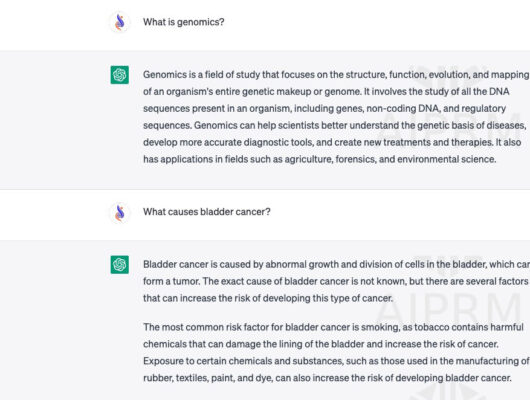For life science and biotech companies to remain relevant, showing up on Google and Bing’s front page search results has become a must. To achieve this, Search Engine Optimization (SEO) is one of the most — if not the most — effective marketing tools for a company to generate leads and establish credibility.
But securing a spot on top of the front page is becoming more complex every day, as search engines employ newer ranking methods and tinker with their algorithms. Here are our pro tips to overcome lead generation challenges in the life science sector.
1. The Golden Rule: Know Your Audience
Potential Life Science Clients Are Not That Keen On Sales Messages
Healthcare providers, biotech enthusiasts, scientists, and other life science professionals are not the most accommodating audience. They love quick access to data, facts, and proven points. This means you need to provide them with technically accurate, fluff-free content if you plan to earn their attention and trust.
Use Multiple Channels To Reach Your Audience
In a way, the explosion in marketing channels made reaching out to professionals in the life science field easier. Trade shows, search ads, social media, and email marketing are all juicy touchpoints. However, each channel requires its own set of skills, knowledge, and approach towards content. It’s also difficult to anticipate which mix will work best and why.
Consolidate an Internal Team
Granted, this task may seem slow and challenging. But building your own internal team of life science specialists for each discipline — design, SEO, development, paid ads, and so on — is a great solution for a multichannel program. Don’t hesitate to invest the necessary time in managing, training, and mentoring your potential teammates.
2. Generate a Solid Lead Generation Process
You know your audience, you’ve assembled a core team, now let’s take it step by step.
Step 1 – Situation Analysis
Your strategy departments should undertake a situation analysis to review the company’s goals and the current marketing strategy’s performance, to see what can be optimized to boost lead generation.
Step 2 – Tactical Planning
The next step is to combine all intel collected and focus it toward building a custom lead generation plan, made for your particular biotech brand.
If your team has had previous experience with other life science or B2B companies, this will be a valuable asset. Otherwise, you can contact a specialized consulting agency.
Step 3 – Marketing Execution And Feedback Gathering
Your marketing team should develop and implement the strategy program across multiple channels.
Do not shy away from data. See which channel generated the highest reach: was it social media? Was it a youtube paid advertisement? Was it a flashing ad on the side of a Technical College Website? Weigh in your options and budget, and decide which channels could benefit from more funding and attention.
3. Choose The Right Keywords

Get in the mind of your audience. Make sure you tick all the right keywords — aka search terms — that would bring a researcher to your page. Combining them correctly is essential. Key phrases will narrow down the search to your particular topic.
Short tail keywords, such as “heart monitors” will have a lot of volume, which sounds great… but that also comes with a higher number of competitors targeting this keyword, making it difficult to rank higher.
That’s where long-tail keywords come in. Search terms like “cardiac monitors,” “insertable cardiac monitors,” and “heart monitoring device.” These are typically less search volume, but easier to rank for. And the more keywords you include within your content, the stronger the link between your webpage and that keyword. Using keywords give your content the chance to rank for a range of topics related to your particular subject.
Without the right keywords, people may have a hard time finding the articles they need. But beware! You should choose your terms wisely to avoid publishing content that veers off-topic.
But remember: try to avoid keyword stuffing – a good frame of reference is using a keyword once every 100 words. This will help determine your content length, too.
Discover Your Top Terms
This is achieved based on multiple criteria. Your team should start by gathering a top keyphrase list and establish a map for the entire site, which could then be run through competitive analysis.
Use cross-links between pages and introduce phrases with keywords in the tags and headers. Also, Google algorithms prioritize subheaders when fishing out results, so make sure your articles are formatted in a sub-header-friendly fashion.
Update Content Consistently
Reflect the rapid technological progress by creating and providing consistent content. By publishing often and consistently, you make sure your website stays active, which leads to higher positions in the search engines. Don’t forget to go back to older content and update them, especially if they are ranking well! Always keep your information up to date.
4. Tracking And KPIs
As mentioned before, track your visitors, analyze conversions, and run A/B tests. Set up a goal for your conversions, and track progress with the help of marketing KPI tools and dashboards.
Remember that, when it comes to KPIs, one transaction might not cover the entire value potential of conversion. You might have to link conversion value to customer lifetime value or other long-term value metrics. This will help you estimate the ROI of CRO activities and marketing in general.
5. Increase Website Speed
This is a neat little trick to bolt you ahead of many university-backed websites. It’s as simple as this: the faster your site responds to search, means a better user experience, so Google will rank it higher than slower websites. To achieve that, use a reliable web hosting provider and make sure your website is mobile-friendly. Get your IT crew to remove unnecessary scripts and plugins that might lag your site. Delete spam comments and fix any broken links.
6. Promote And Manage Customer Reviews
In the life science field, customer reviews generate a positive SEO impact and improve overall ranking. They signal google and other search engines that your site is authoritative and trusted. Do not avoid straight-out asking your customers for a review with the help of a conveniently placed button. Most of them will also appreciate the transparency.
Going the extra mile and actually responding to each or most reviews is greatly encouraged as it shows customers that the company values their opinions. Reviews will include keywords themselves — valuable for SEO for your company — and provide first-hand life science information to the customers.
In Conclusion
Make sure your content creators have a good reputation online and are viewed as credible sources. Respond to every comment, review, or conversation happening around your business — whether positive or negative.
Ensure that all URLs associated with your brand provide useful content. Your goal should always be to move up in the search engine results and maintain a relevant position.
When it comes to SEO for life science and biotech brands, you need a reputable group of professionals to steer you in the right direction.
At Sciencia Consulting, we have the expertise and experience to boost your company’s rankings in search engine results pages and enhance its online visibility. Contact us today, and let us take your brand to the top!
You might also enjoy:








